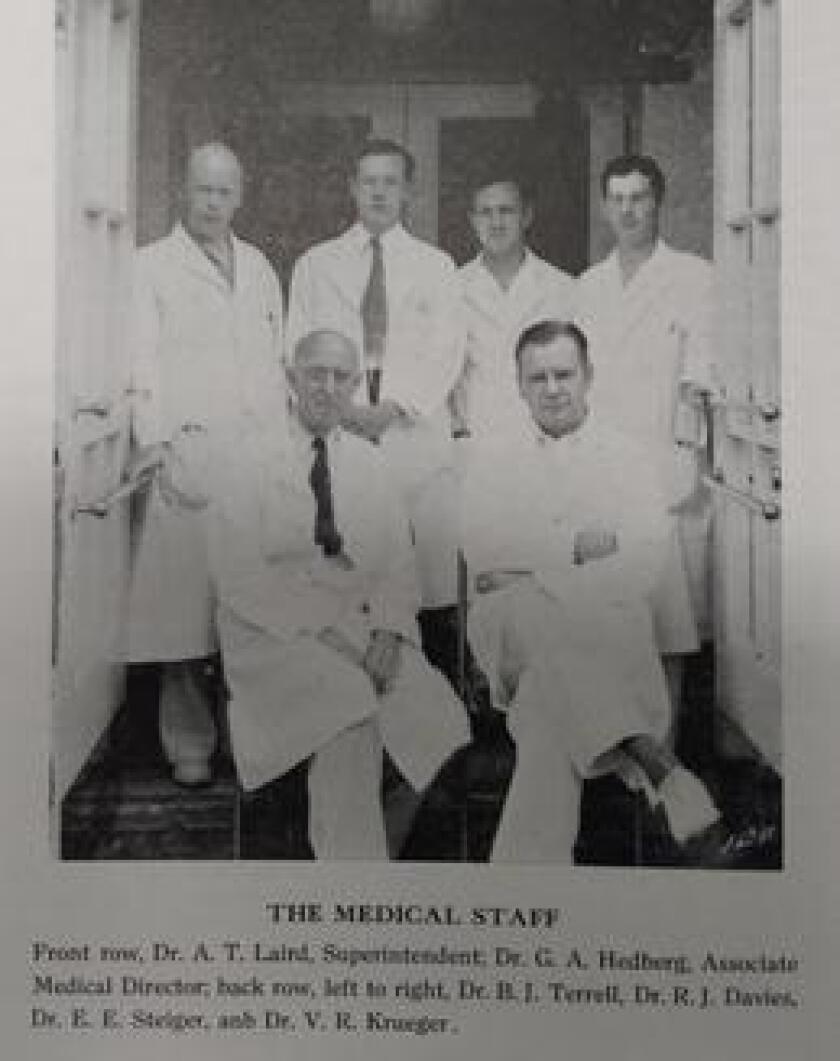The building that once housed the Nopeming Sanatorium is now considered a mecca for those fascinated with paranormal activity. Yet the history of the building itself may be just as terrifying as any ghost story.
The building initially served as an answer to the nation’s tuberculosis crisis.
Built deep within a wooded area on the outskirts of Duluth, the topography of the area was thought to be optimal for housing — and hiding away — patients who had contracted tuberculosis.
Nopeming opened its doors in May 1912, providing 50 initial beds to tuberculosis patients in Minnesota and surrounding areas who were desperately seeking care — and confinement — related to the highly contagious and deadly disease.
Among one of 13 sanatoriums in the state, Nopeming eventually housed up to 300 patients at a time. The grounds included quarters for those who worked at the sanatorium, along with special housing for children suffering from the disease.
ADVERTISEMENT

As medications for tuberculosis became available, the need for the sanatorium waned. While the transition to nursing home care began in the 1950s, by 1971 it officially became a St. Louis County nursing home, known as Nopeming Nursing Home.
By 2002, the county made the decision to close the facility, ending another chapter of Nopeming’s history.
Just a few years later, a new chapter began when the building was purchased by Frank Vennes Jr., a Twin Cities businessman now serving prison time for his involvement in Tom Petter’s Ponzi scheme.

The building is now in the hands of Orison Inc., which initially ran tours to raise funds to upgrade the building. However, all tours were shut down due to various fire code violations.
Tuberculosis treatment
In the early 1900s, tuberculosis sanatoriums began opening throughout the country, providing a place for those infected to seek respite and escape the possibility of infecting loved ones. Minnesota was home to what were considered top-of-the-line treatment facilities.
At the same time, educational campaigns were being launched throughout the nation, informing people on the dangers of tuberculosis, particularly as it related to the transmission of the disease.
Sanatoriums relied heavily on a combination of fresh air, healthy food and rest. By 1904, more than 100 sanatoriums had been built across the country — by 1953, that number was closed to 839, according to the Centers for Disease Control and Prevention (CDC) .

Nopeming Sanatorium was built in 1912, in the midst of rapid treatment growth. Its facilities housed 50 patients at first, ramping up to 300 to fulfill area needs. In addition to housing for those who worked at Nopeming, it is alleged that the boiler room — located in the main patient building — was used to burn the bodies of those who succumbed to tuberculosis.
ADVERTISEMENT
The need for sanatoriums waned in the 1950s, when medical interventions allowed tuberculosis patients to be treated safely at home.
Chasing vandals, owners
The once-majestic building, which included 212 nursing home patient rooms when it closed in 2002, included roughly 40 acres of manicured and wooded grounds.
Nopeming lived up to its name, translated roughly to "In the Woods" in the Ojibwe language.
From Interstate 35, all that is visible of the building in the summer months is a large chimney, spanning upwards beyond the tree line.
While now fenced off and laden with "No trespassing" signs, its long driveway was once a passageway into another world of sorts — one filled with tremendous history and haunted stories whispered among workers.

Those are the stories that inspire so many people fascinated with the paranormal to make the drive from throughout the region.
That activity became more pronounced after Nopeming was featured on the Travel Channel's "Ghost Adventure" show in 2015.
While Orison Inc. did run official tours at the site, all activity halted in 2019 when issues related to the safety of such tours were brought up to the Minnesota State Fire Marshal's Residential Care and Lodging Team.
ADVERTISEMENT
After receiving the complaint, Nopeming — and Orison Inc. — was shut down due to violations related to a lack of power and sprinkler systems. It also cited structural damage, exposed electrical wiring and a lack of emergency lights, among other violations.
Touched by scandals
Frank Vennes, Jr. purchased Nopeming in 2005 for roughly $1 million, with alleged plans to gift the building to Teen Challenge, a Christian recovery program.
Teen Challenge denied the offer, claiming it wouldn't be able to shoulder the costs needed to convert the facility to its needs.
Vennes then went on to offer the building to another Christian charity. In 2007, he gave the building to the Fidelis Foundation.
According to a 2006 story in the Duluth News Tribune, St. Louis County records showed the Fidelis Foundation owned 40 acres and a property in Midway Township, valued at roughly $280,000.
Vennes later landed in prison in 2013 on a 15-year sentence related to "fraudulently raising money from individuals and through hedge funds for investment in Petters Company Inc.," according to the U.S. Attorney's Office.
While closed to the public, the company is considered to be owned by Orison Inc.






















